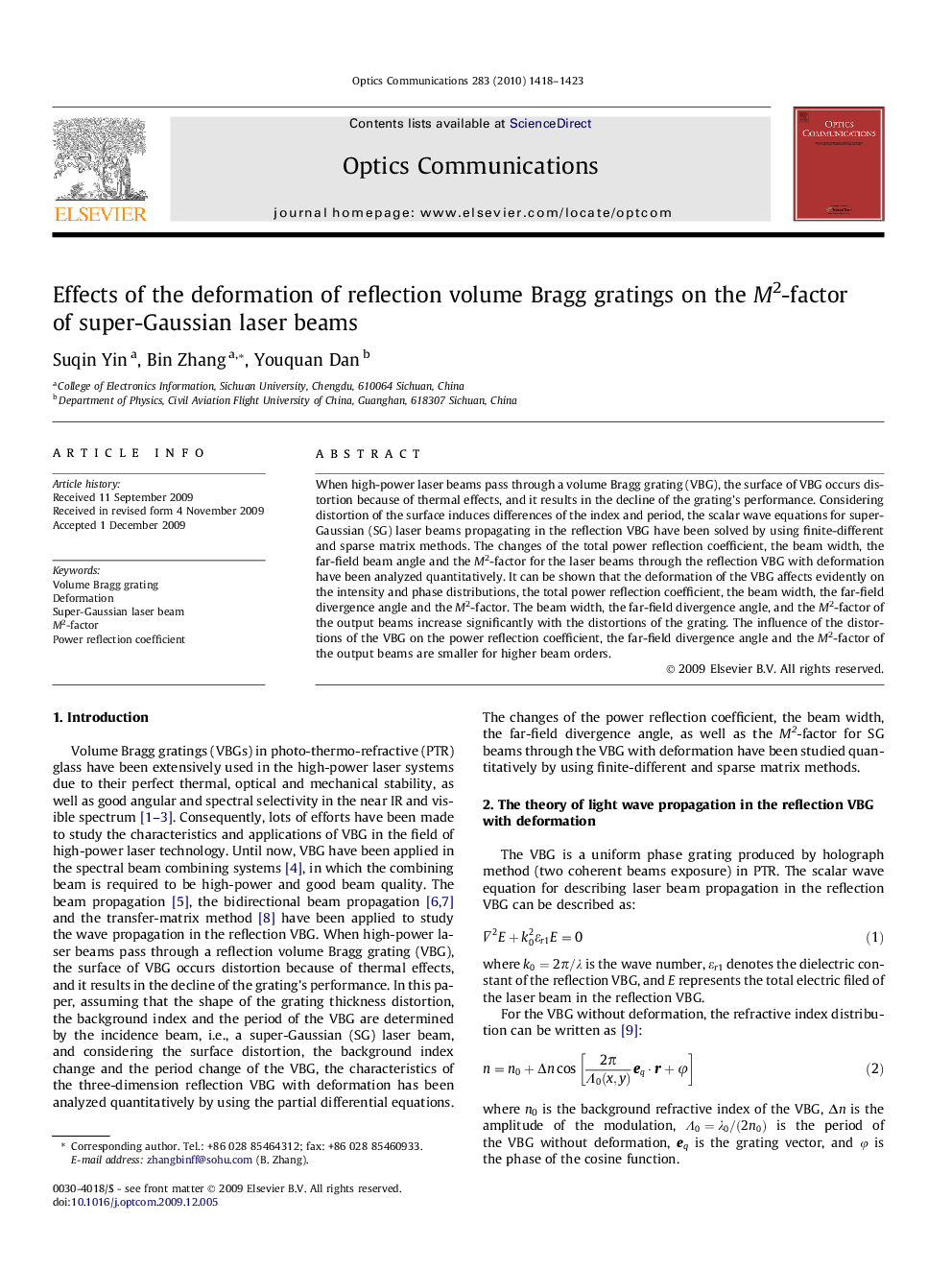| Article ID | Journal | Published Year | Pages | File Type |
|---|---|---|---|---|
| 1538456 | Optics Communications | 2010 | 6 Pages |
Abstract
When high-power laser beams pass through a volume Bragg grating (VBG), the surface of VBG occurs distortion because of thermal effects, and it results in the decline of the grating's performance. Considering distortion of the surface induces differences of the index and period, the scalar wave equations for super-Gaussian (SG) laser beams propagating in the reflection VBG have been solved by using finite-different and sparse matrix methods. The changes of the total power reflection coefficient, the beam width, the far-field beam angle and the M2-factor for the laser beams through the reflection VBG with deformation have been analyzed quantitatively. It can be shown that the deformation of the VBG affects evidently on the intensity and phase distributions, the total power reflection coefficient, the beam width, the far-field divergence angle and the M2-factor. The beam width, the far-field divergence angle, and the M2-factor of the output beams increase significantly with the distortions of the grating. The influence of the distortions of the VBG on the power reflection coefficient, the far-field divergence angle and the M2-factor of the output beams are smaller for higher beam orders.
Related Topics
Physical Sciences and Engineering
Materials Science
Electronic, Optical and Magnetic Materials
Authors
Suqin Yin, Bin Zhang, Youquan Dan,
